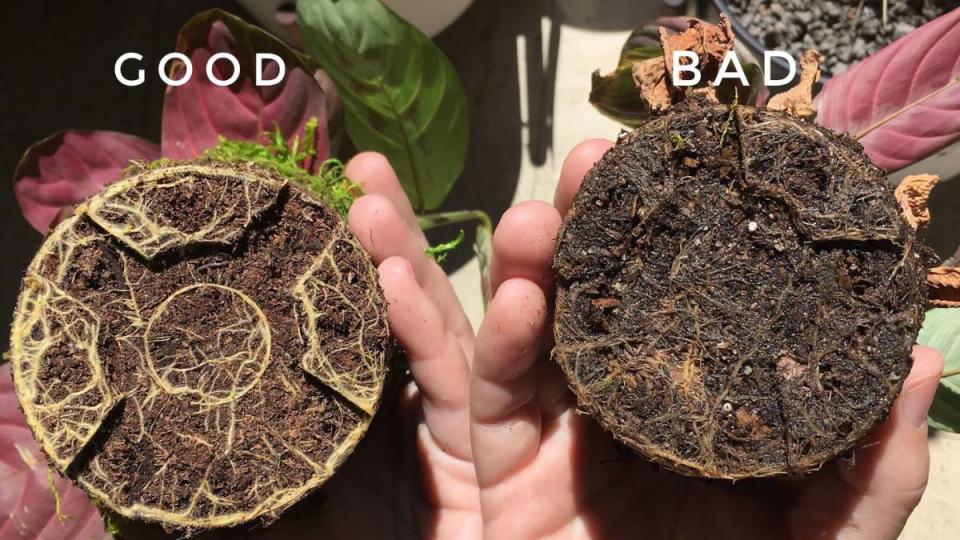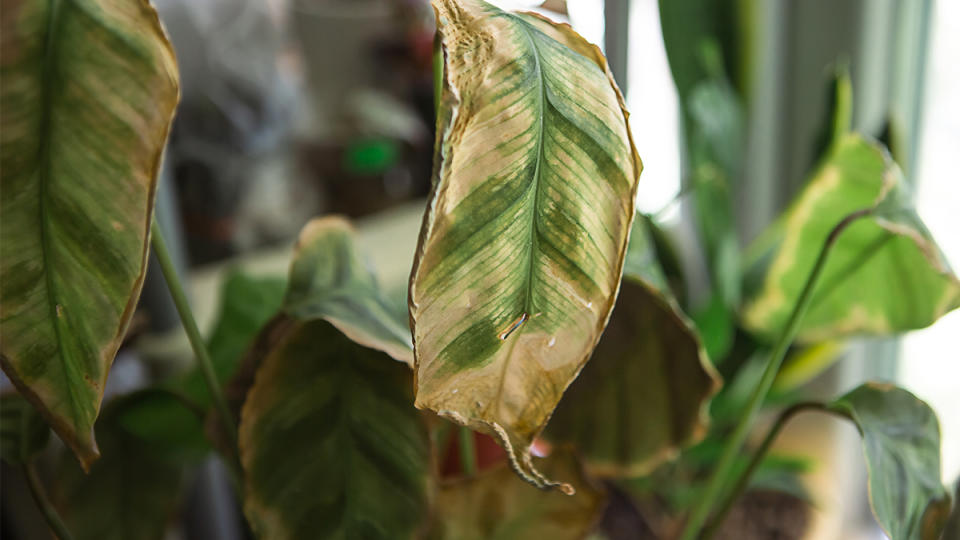Plant Pros Share Their Top Tips for Reversing Root Rot — Plus, the #1 Way to Prevent It!
Root rot: These two little words can strike fear in the heart of any plant parent. But what exactly is this mysterious horticultural affliction — and does it mean saying goodbye to your snake plant or rubber tree? We asked experts and they assured us you can put an end to the problem. Keep reading to find out how to reverse root rot!
What exactly is root rot?

“Root rot is the number one cause of plants dying off,” says #Planttok icon Tanner Mitchell, who has saved hundreds of waterlogged plants for customers at his shop and hosts live classes for houseplant newbies. “The good news is that root rot can be caught and treated, and once you know what to look for, you can prevent it going forward.”
Root rot is a common plant disease that tends to afflict potted indoor plants. And it’s presentation is pretty much what it sounds like: rotten, decomposing roots that will eventually die. Whether it's caused by a fungal, bacterial or even viral infection, it will kill your plant — and possibly contaminate others — if you don’t address it. Take a look at the side-by-side comparison above, photographed by the gardeners at boutique plant shop Léon & George. Those mushy brown “BAD” roots on the right don’t stand a chance of providing their plant with the water and nutrients it needs.
“With many plant interventions, we advise customers to wait until the spring or when a plant isn’t dormant,” notes Mitchell. “But root rot is a horticultural emergency that needs to be stopped in its tracks and handled ASAP.”
What causes root rot?
The top cause is prolonged exposure to soil conditions that are too wet, which deprives the roots of oxygen and leads to suffocation and death. “Most of us remember learning that plants need light and water back in middle school science class, but we can forget that plants need oxygen just like people,” shares Mitchell. “There are tiny air pockets in your potting soil and when they get waterlogged, the plant’s oxygen supply is cut off.”
So will less water prevent root rot? Kind of: “It’s usually not about an excess volume of water,” cautions Mitchell. “What’s really going on is that you watered too frequently and the soil never got a chance to dry out and let more air through.” The plant doctors at Léon & George, who match designer-approved plants with the perfect planters and stands, agree. “Some houseplants, including ficus plants and olive trees, actually need to use at least 90% of their water before they get watered again or the roots can rot.”
How to know if a plant has root rot

“Part of what makes root rot frustrating is that we don’t want to unpot a plant every time a leaf looks yellow or there’s some other sign that maybe it has root rot,” explains Mitchell. “Taking a plant out of its pot risks sending it into shock, which can attract pests and create new problems, so it’s worth checking for multiple clues before you take that step.” Here’s what to look for:
Do new leaves look strange? If fresh growth is popping up in distorted shapes or strange colors, that’s a telltale sign of root rot.
Is your plant wilted after watering? If you just gave your plant a good drink and it looks wilted, that’s a sign that there are no roots to take up moisture to the plant.
Are large leaves browning at the edges? Especially in popular Fiddle Leaf Ferns, this is a likely sign.
Does the soil smell funny? Funky odor is often a giveaway that root rot has set in.
How to reverse root rot
While diagnosing root rot may be multifaceted (think Dr. House solving a medical mystery), treating it is a more straightforward business (akin to routine surgery). “There’s only one effective way to address root rot,” says Mitchell. “Roll up your sleeves, excise the affected roots, sanitize as you work and hope the plant can take it from there.”
Get rid of root rot in 4 steps:
Step 1: Take your plant out of its pot and discard all the soil around it. “Weather permitting, a jet spray from a garden hose is the ideal intensity,” says Mitchell. “The goal is for it to look like a bare root plant.”
Step 2: Thoroughly remove all the rotted roots with scissors or small scissors wiped down with rubbing alcohol. “The best way to determine if a root is rotten is feel. If it’s mushy, get it out of there!” encourages Mitchell. “The more methodical you are, the greater the chance your plant will survive.”
Step 3: Generously saturate the roots in a solution of 1 part hydrogen peroxide to 3 parts water. “For a small houseplant, you can wipe on the solution or use a spray bottle. For a larger plant, pour the solution in a bucket and swirl for 30 seconds.”
Step 4: Repot in a new pot (or sanitize your old pot) with appropriate potting soil and water.
Related: 10 Brilliant Uses for Hydrogen Peroxide That May Surprise You
How to prevent root rot in the future
“The best way to avert root rot is to select plants that need what you want to give,” advise the experts at Léon & George. “If you love to dote on your plants and water frequently, for example, many plants may rebel against all that TLC. But not calatheas — they require their soil to be consistently moist and will appreciate your nurturing.” Worried you might forget to water? “A snake plant can go ages without water so as we say, when in doubt, let it drought!” Whatever plants you choose, follow these tips to protect their root health:
Never skip drainage. “People fall in love with planters that have no drainage holes and just hope things will work out,” says Mitchell. No surprise: The result is often rotten roots. Instead, pot your plant in a plastic pot with good drainage and slip that pot into a beautiful vessel, known in Europe as a cachepot or drop pot.
Double-check the light. “Many houseplants require brighter light than we give them,” reveals Mitchell. Without enough light plants can’t photosynthesize or use the water you give them; that excess H20 can rot the roots.
Loosen up the soil. “Garden soil tends to be too moisture-retentive for houseplants, and even potting soil should be considered a baseline that you amend with perlite, orchid bark or pumice stone to get the right balance of drainage.”
Check out this Tiktok to learn how to amend your soil the easy way!
For more houseplant tips, keep reading!
Plant Pros: 7 Genius Ways to Water Plants While You’re Away + One Hack Never To Try
Can Houseplants Improve Air Quality? 3 Types That May Improve Allergies, Headaches & Sleep
